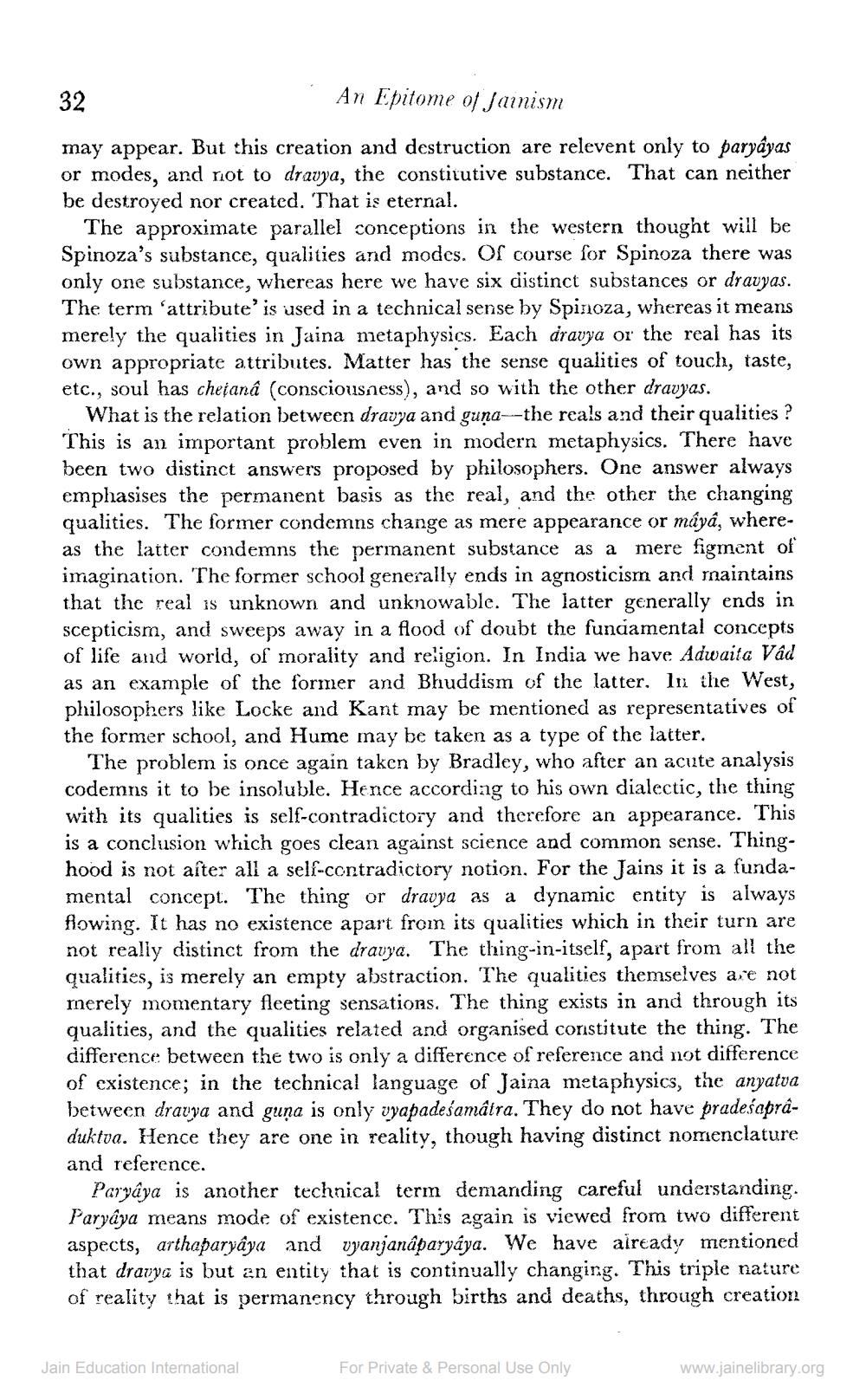________________
32
An Epitome of Jainism
may appear. But this creation and destruction are relevent only to paryayas or modes, and not to dravya, the constitutive substance. That can neither be destroyed nor created. That is eternal.
The approximate parallel conceptions in the western thought will be Spinoza's substance, qualities and modes. Of course for Spinoza there was only one substance, whereas here we have six distinct substances or dravyas. The term 'attribute' is used in a technical sense by Spinoza, whereas it means merely the qualities in Jaina metaphysics. Each dravya or the real has its own appropriate attributes. Matter has the sense qualities of touch, taste, etc., soul has cheianâ (consciousness), and so with the other dravyas.
What is the relation between dravya and guna--the reals and their qualities? This is an important problem even in modern metaphysics. There have been two distinct answers proposed by philosophers. One answer always emphasises the permanent basis as the real, and the other the changing qualities. The former condemns change as mere appearance or máya, whereas the latter condemns the perinanent substance as a mere figment of imagination. The former school generally ends in agnosticism and maintains that the real is unknown and unknowable. The latter generally ends in scepticism, and sweeps away in a flood of doubt the fundamental concepts of life and world, of morality and religion. In India we have Adwaita Vad as an example of the former and Bhuddism of the latter. In the West, philosophers like Locke and Kant may be mentioned as representatives of the former school, and Hume may be taken as a type of the latter.
The problem is once again taken by Bradley, who after an acute analysis codemns it to be insoluble. Hence according to his own dialectic, the thing with its qualities is self-contradictory and therefore an appearance. This is a conclusion which goes clean against science and common sense. Thinghood is not after all a self-contradictory notion. For the Jains it is a fundamental concept. The thing or dravya as a dynamic entity is always flowing. It has no existence apart from its qualities which in their turn are not really distinct from the dravya. The thing-in-itself, apart from all the qualities, is merely an empty abstraction. The qualities themselves are not merely momentary fleeting sensations. The thing exists in and through its qualities, and the qualities related and organised constitute the thing. The difference between the two is only a difference of reference and not difference of existence; in the technical language of Jaina metaphysics, the anyatva between dravya and guna is only vyapadeśamátra. They do not have pradeśapraduktva. Hence they are one in reality, though having distinct nomenclature and reference.
Paryâya is another technical term demanding careful understanding. Paryâya means mode of existence. This again is viewed from two different aspects, arthaparyaya and vyanjanaparyaya. We have already mentioned that dravya is but an entity that is continually changing. This triple nature of reality that is permanency through births and deaths, through creation
Jain Education International
For Private & Personal Use Only
www.jainelibrary.org




